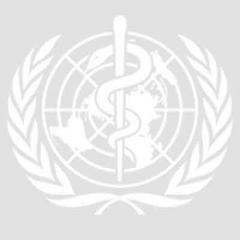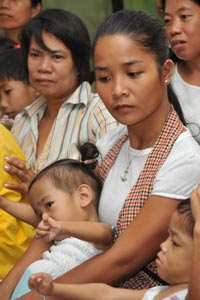Your progress
0%
Here are some of the key ideas you need to understand in order to support health prevention efforts in your community.
Use your mouse or keyboard to expand each of the headings below.
Risk factors influence a person’s health and increase the likelihood of injury, illness and disease. People everywhere are exposed to health risks throughout their lives. Some of the leading risk factors are:
Prevention activities reduce the risks to health of individuals and communities.
Prevention interventions can take place at one of three levels.
Primary prevention – the phrase “prevention is better than cure” is one that many people are familiar with and is the focus of primary prevention. Primary prevention uses interventions that prevent health conditions from occurring. These interventions either focus on individuals and involve changing health behaviours, immunization or improving nutrition, or they focus on the environments in which individuals live by securing safe water supplies, sanitation and good living and working conditions.
Primary prevention is equally important for people with and without disabilities and is the main focus of this element.
Secondary prevention is the early detection and early treatment of health conditions, with the aim of curing or lessening their impact.
Examples of early detection include mammograms to detect breast cancer or eye examinations to detect cataracts.
Examples of early treatment include treatment of trachoma with antibiotics to prevent blindness, multidrug treatment of leprosy to prevent disease progression or appropriate handling of a fractured bone to promote proper healing and prevention of deformity.
Secondary prevention strategies for people both with and without disabilities are discussed in the Medical care element.
Tertiary prevention aims to limit or reverse the impact of existing health conditions and impairments. It includes rehabilitation services and interventions that aim to prevent activity limitations and promote independence, participation and inclusion.
Tertiary prevention strategies are discussed in the elements on Rehabilitation and Assistive devices.
See how different types of prevention services were provided to a woman in India who had lost a limb.


Anita is a 50-year-old woman who lives in a hilly area of Raigad District, Maharashtra, India.
One day Anita sustained a small injury to her right foot. She quickly developed pain in her leg and after a few days it turned black. Her son took her to Alibaug Hospital, 15 km away, where they advised her to go to a specialized hospital in Mumbai, 100 km away. Health personnel in Mumbai immediately diagnosed Anita with diabetes and amputated her right leg below the knee as it had developed gangrene.
Immediately following surgery, Anita’s family took her back to their village as they could not afford to stay in the city. Anita was unable to walk so her son had to carry her on his back.
The village health worker informed Anita and her family about a CBR organization that provided free health services for people who had lost a limb. Anita visited the CBR programme at a health centre close to her village. Her amputated stump was checked to ensure proper healing and her other leg was assessed to check for early sensory and circulation changes. Anita learnt about diabetes and how to control the condition with medicine, regular exercise and diet. She was given crutches and trained in how to use them.
Later a team of health professionals visited the health centre and fitted Anita with a prostheses and a good pair of shoes to ensure that her left foot was protected from injury. Shewas given gait training to ensure that she could walk properly with her prosthesis, and CBRpersonnel constructed parallel bars outside her hut so she could practise walking withher prosthesis at home. Gradually Anita’s confidence improved, until she was able to walkindependently with her prosthesis and return to household tasks and work in the fields.
Like everybody, people with disabilities are exposed to risk factors for which they require routine preventive health care, such as immunization.
People with disabilities may also require targeted and specialized interventions linked to their impairments or because they are more vulnerable to the health risks present in the community. For these situations, special facilities or modifications may be required to meet their needs.
People with disabilities are also at risk of secondary conditions, such as health problems or complications directly linked to their primary health condition. Examples include pressure sores, joint contractures, pain, obesity, osteoporosis and depression.

These secondary conditions can be addressed with early intervention, and many of them can be prevented altogether. For example, a person with paraplegia can prevent pressure sores with good skin care and prevent urinary tract infections with good bladder management.
See how CBR personnel working in a hospital in Viet Nam were able to reduce readmissions by making sure that patients’ homes are accessible.


Handicap International supported the establishment of a Spinal Cord Injury department at a rehabilitation hospital in Ho Chi Minh City, Viet Nam. CBR personnel working in this department were responsible for following up discharged patients, with the aim of:
CBR personnel tried to ensure follow-up for all patients, but due to limited human resources and the large coverage area, only 25% of individuals were seen and often those in greatest need were missed.
Medical and CBR personnel decided to implement a new system whereby patients were prioritized. Home visits were provided for high-risk individuals and telephone calls and education booklets were provided for low-risk individuals. As a result, the rehabilitation hospital has seen a decrease in re-admissions. This initiative has also proved to be more cost-effective and less stressful for CBR personnel.
Prevention is just as important for people without disabilities, since many impairments can be prevented. Eighty percent of all blindness in adults is preventable, and approximately half of all childhood blindness can be avoided by treating diseases early and by correcting abnormalities at birth, such as cataract and glaucoma.
World Health Assembly resolution WHA58.23 on disability, including prevention, management and rehabilitation urges Member States to increase public awareness of the importance of the issue of disability and to coordinate the efforts of all sectors to participate in disability prevention activities.
Some members of the disability community are concerned that the term “prevention programmes” may suggest that their lives are not worth living and should be prevented. This requires sensitivity to the message that prevention programmes are sending. In principle, there is no conflict between prevention interventions that try to reduce impairments and the social mandate to maintain and improve the health of people with disabilities.